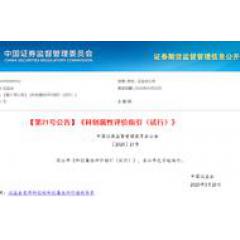
Source: Cochon volant de Snow Mountain
Cet article est à propos de 2800 mots , Il est recommandé de lire 10 minutes
Cet article partagera avec vous 16 conseils pratiques pour le traçage matplotlib.
Label: Analyse des données
1. Ajouter titre-titre
import numpy as npimport matplotlib.pyplot as plt # Afficher le chinois plt.rcParams = plt.rcParams = False% matplotlib inlinex = np.arange (0,10) plt.title ('This is an example title') plt.plot (x , x * x) plt.show ()Production:

2. Ajouter du texte-texte
Définissez simplement les coordonnées et le texte
import numpy as npimport matplotlib.pyplot as plt # Afficher chinois plt.rcParams = plt.rcParams = False% matplotlib inlinex = np.arange (-10,11,1) y = x * xplt.plot (x, y) plt. title ('Ceci est un exemple de titre') # Ajouter du texte plt.text (-2.5,30, 'function y = x * x') plt.show ()Production:

3. Ajouter une annotation-annoter
- xy: Point de coordination pour les remarques
- xytext: Les coordonnées du texte de la remarque (la valeur par défaut est la position de xy)
- flèche: Dessinez une flèche entre xy et xytext
Production:

4. Définissez le nom de l'axe-xlabel / ylabel
import numpy as npimport matplotlib.pyplot as plt # Display Chinese plt.rcParams = plt.rcParams = False% matplotlib inlinex = np.arange (1,20) plt.xlabel ('example x axis') plt.ylabel ('example y Axe ') plt.plot (x, x * x) plt.show ()Production:

5. Ajouter une légende-légende
import numpy as npimport matplotlib.pyplot as plt # Afficher chinois plt.rcParams = plt.rcParams = False% matplotlib inlineplt.plot (x, x) plt.plot (x, x * 2) plt.plot (x, x * 3 ) plt.plot (x, x * 4) # Passer directement dans legendplt.legend () plt.show ()Production:

6. Ajustez la couleur-couleur
Passer les paramètres de couleur, prendre en charge les méthodes suivantes
import numpy as np import matplotlib.pyplot as plt% matplotlib inlinex = np.arange (1,5) #Plusieurs façons de colorer plt.plot (x, color = 'g') plt.plot (x + 1, color = ' 0.5 ') plt.plot (x + 2, color =' # FF00FF ') plt.plot (x + 3, color = (0.1,0.2,0.3)) plt.show ()Production:

7. Changer de marqueur de style de ligne
import numpy as np import matplotlib.pyplot as plt% matplotlib inlinex = np.arange (1,5) plt.plot (x, marker = 'o') plt.plot (x + 1, marker = ' > ') plt.plot (x + 2, marker =' s ') plt.show ()Production:

8. Afficher la formule mathématique-mathtext
Le format est le suivant: \ omega $, le symbole dans la formule sera analysé au milieu
import numpy as np import matplotlib.pyplot as plt% matplotlib inlineplt.title ('chenqionghe') plt.xlim () plt.ylim () plt.text (2,4, r '$ \ alpha \ beta \ pi \ lambda \ omega $ ', taille = 25) plt.text (4,4, r' $ \ sin (0) = \ cos (\ frac {\ pi) {2}) $ ', taille = 25) plt.text (2, 2, r '$ \ lim_ {x \ rightarrow y} \ frac {1} {x ^ 3} $', taille = 25) plt.text (4,2, r '$ \ sqrt {x} = \ sqrt { y) $ ', taille = 25) plt.show ()Production:

9. Afficher grille-grille
import numpy as np import matplotlib.pyplot as plt% matplotlib inlinex = 'a', 'b', 'c', 'y = plt.grid () # Vous pouvez également définir la couleur, la largeur de ligne et le style de ligne # plt.grid (color = 'g', linewidth = '1', linestyle = '-.') plt.plot (x, y) plt.show ()Production:

10. Ajustez l'axe scale-locator_params
- Ajustez l'axe x et l'axe y en même temps: plt.locator_params (nbins = 20);
- Ajustez uniquement l'axe des x: plt.locator_params («x», nbins = 20);
- Ajustez uniquement l'axe y: plt.locator_params («y», nbins = 20).
Production:

11. Ajustez l'axe range-axis / xlim / ylim
- axe: , X de 0 à 5, y de 0 à 10
- xlim: Les paramètres correspondants sont xmin et xmax, qui peuvent ajuster respectivement les valeurs maximum et minimum
- ylim: Identique à l'utilisation xlim
Production:

12. Ajustez la date adaptive-autofmt_xdate
Parfois, les dates affichées se chevauchent, ce qui est très peu convivial. Appeler plt.gcf (). Autofmt_xdate () ajustera automatiquement l'angle
import numpy as npimport pandas as pdimport matplotlib.pyplot as plt% matplotlib inlinex = pd.date_range ('2020/01/01', périodes = 30) y = np.arange (0,30,1) plt.plot (x, y) plt.gcf (). autofmt_xdate () plt.show ()Production:

13. Ajouter dual axis-twinx
import numpy as npimport matplotlib.pyplot as plt% matplotlib inlinex = np.arange (1,20) y1 = x * xy2 = np.log (x) plt.plot (x, y1) # Ajouter un axe de coordonnées, par défaut 0 à 1plt.twinx () plt.plot (x, y2, 'r') plt.show ()Production:

14. Remplissez area-fill / fill_beween
remplir la zone de fonction de remplissage
import numpy as np import matplotlib.pyplot as plt # Display Chinese plt.rcParams = plt.rcParams = False% matplotlib inlinex = np.linspace (0,5 * np.pi, 1000) y1 = np.sin (x) y2 = np .sin (2 * x) plt.plot (x, y1) plt.plot (x, y2) # Fill plt.fill (x, y1, 'g') plt.fill (x, y2, 'r') plt .title ('Ceci est un exemple de titre') plt.show ()Production:

fill_beween zone d'intersection de la fonction de remplissage
import numpy as npimport matplotlib.pyplot as plt # Afficher le chinois plt.rcParams = plt.rcParams = False% matplotlib inlineplt.title ('Ceci est un exemple de titre') x = np.linspace (0,5 * np.pi, 1000 ) y1 = np.sin (x) y2 = np.sin (2 * x) plt.plot (x, y1) plt.plot (x, y2) # Fill plt.fill_between (x, y1, y2, où = y1 > y2, interpoler = Vrai) plt.show ()Production:

15. Dessinez un shape-matplotlib.patche rempli
import numpy comme npimport matplotlib.pyplot comme pltimport matplotlib.patches comme mptaches% matplotlib inlinexy1 = np.array () xy2 = np.array () xy3 = np.array () xy4 = np.array () fig, ax = plt. subplots () # circle, spécifiez les coordonnées et le rayon circle = mptaches.Circle (xy1,0.15) ax.add_patch (circle) #rectangle rect = mptaches.Rectangle (xy2,0.2,0.1, color = 'r') ax.add_patch (rect) # polygon polygon = mptaches.RegularPolygon (xy3,6,0.1, color = 'g') ax.add_patch (polygon) # ellipse = mptaches.Ellipse (xy4,0.4,0.2, color = 'c') ax .add_patch (ellipse) ax.axis ('égal') plt.show ()Production:

16. Commutez style-plt.style.use
Matplotlib prend en charge une variété de styles, vous pouvez changer de style via plt.style.use, par exemple: plt.style.use ('ggplot') input plt.style. Disponible pour afficher tous les styles:
import matplotlib.pyplot comme pltplt.style. disponibleProduction:

Exemple de code, style ggplot:
import numpy as npimport matplotlib.pyplot as pltimport matplotlib.patches as mptaches% matplotlib inlineplt.style.use ('ggplot') # Créer 4 nouvelles sous-parcelles fig, axes = plt.subplots (2,2) ax1, ax2, ax3, ax4 = axes.ravel () # Le premier graphique x, y = np.random.normal (size = (2,100)) ax1.plot (x, y, 'o') # Le deuxième graphique x = np.arange ( 0,10) y = np.arange (0,10) colors = plt.rcParamslength = np.linspace (0,10, len (couleurs)) pour s de longueur: ax2.plot (x, y + s, '- ') # Le troisième graphique x = np.arange (5) y1, y2, y3 = np.random.randint (1,25, size = (3,5)) width = 0.25ax3.bar (x, y1, width) ax3.bar (x + width, y2, width) ax3.bar (x + 2 * width, y3, width) # La quatrième image pour i, color in enumerate (colors): xy = np.random.normal (taille = 2) ax4.add_patch (plt.Circle (xy, rayon = 0,3, couleur = couleur)) ax4.axis ('égal') plt.show ()Production:

Adresse d'origine: https://www.cnblogs.com/chenqionghe/
Editeur: Wang Jing
Relecture: Lin Yilin
-Terminer-
Suivez la plate-forme publique officielle WeChat de l'Institut Tsinghua-Qingdao pour la science des données " Tarte aux données AI "Et le numéro de soeur" Tarte aux données JEU "Obtenez plus d'avantages de cours et un contenu de qualité.












